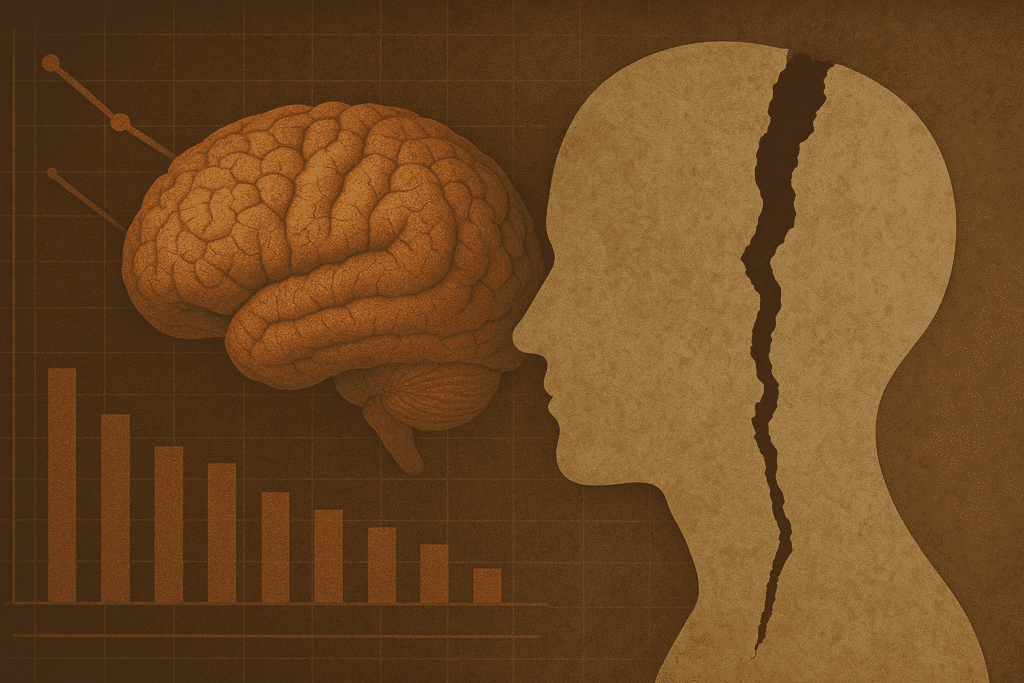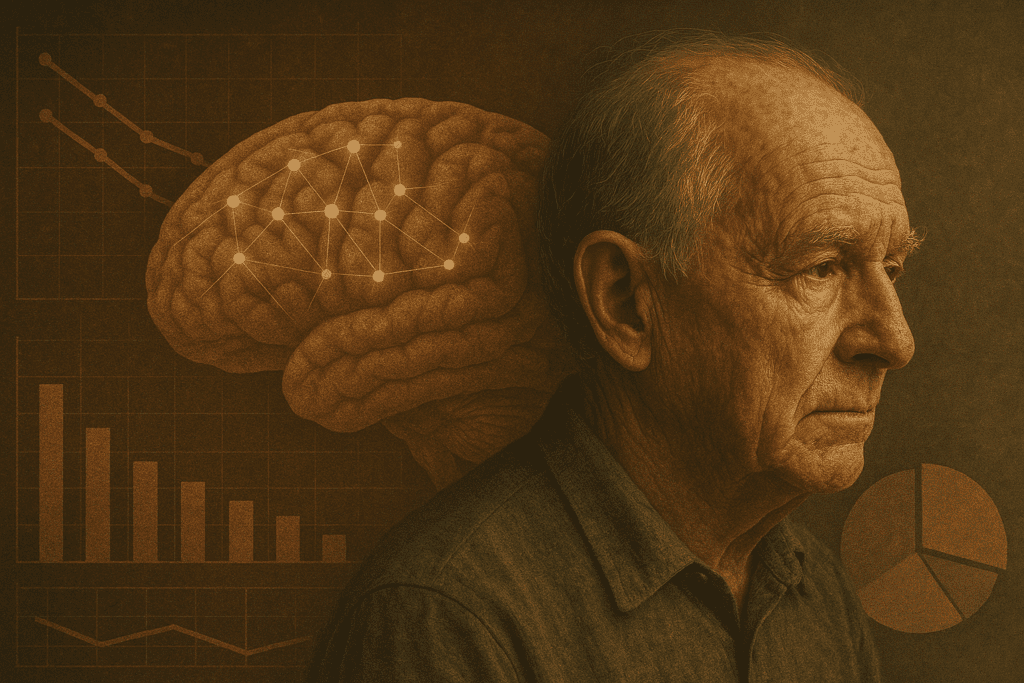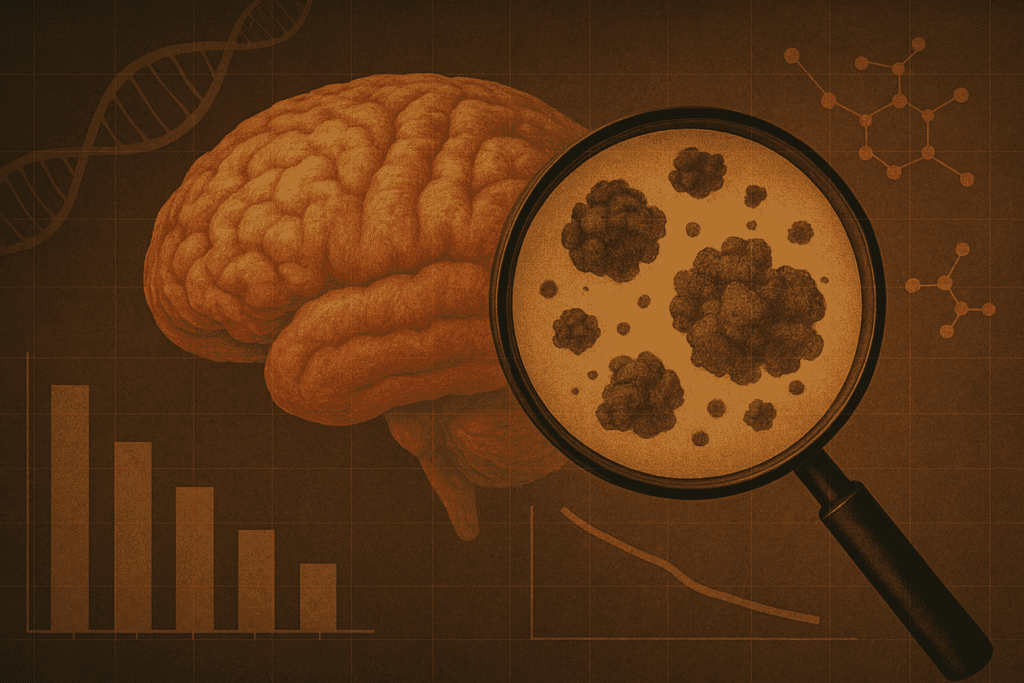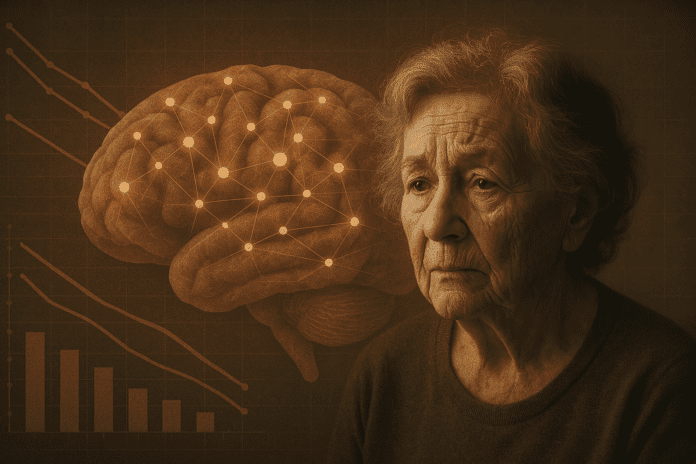Understanding the scope of Alzheimer’s disease and dementia requires more than a cursory glance at clinical symptoms. To fully grasp the magnitude of these conditions, one must turn to current data, emerging research, and long-term trends that reveal how profoundly these neurological disorders impact individuals, families, and societies around the globe. From changing prevalence rates to nuanced risk factors, the science surrounding cognitive decline is evolving rapidly. This article explores the most compelling Alzheimer statistics and presents deeply researched, interesting facts about dementia, offering insight into what the data truly mean for public health and personal well-being.
You may also like: How to Prevent Dementia and Alzheimer’s Disease Naturally: Expert-Backed Strategies to Reduce Your Risk Through Lifestyle and Diet
A Global Glimpse at Alzheimer Statistics
The global prevalence of Alzheimer’s disease and related dementias is both staggering and rapidly increasing. According to the World Health Organization, over 55 million people worldwide currently live with some form of dementia, with Alzheimer’s being the most common type, accounting for 60% to 70% of all cases. By 2050, that number is projected to more than double, reaching 139 million. These alzheimer statistics reflect not only aging populations but also improved diagnostics and growing awareness, which have led to higher reported rates in both developed and developing nations. Yet even these numbers may underrepresent the true prevalence due to underdiagnosis, misclassification, and disparities in access to healthcare.
What is particularly striking about these figures is how they translate into economic burden. The global cost of dementia care was estimated at $1.3 trillion in 2019, a figure expected to rise to $2.8 trillion by 2030. This encompasses direct medical costs, long-term care, and the substantial unpaid labor provided by family caregivers. In the United States alone, over six million people live with Alzheimer’s, and the annual cost of care surpasses $345 billion, placing immense strain on the healthcare infrastructure. These alz facts are more than numbers; they represent human stories, many of which unfold over years of cognitive decline, emotional stress, and caregiving sacrifice.
Shifting Demographics and Their Impact on Cognitive Health
One of the more subtle but powerful forces driving the increase in dementia prevalence is demographic change. As life expectancy continues to climb in most parts of the world, the population over the age of 65 is expanding at an unprecedented rate. This demographic shift alone accounts for a substantial portion of the uptick in dementia cases, as advancing age remains the strongest known risk factor. Yet aging is not the sole explanation. Emerging data also suggest that gender, ethnicity, and socioeconomic status intersect with biological aging to create complex vulnerability profiles.
For instance, women are disproportionately affected, representing two-thirds of all Alzheimer’s patients. This discrepancy may be partly explained by longevity, but hormonal, genetic, and even caregiving roles throughout life may contribute to elevated risk. Additionally, African American and Hispanic populations in the United States are about one and a half to two times more likely than their white counterparts to develop Alzheimer’s or other dementias. These differences are attributed not only to genetic predispositions but also to social determinants of health, including access to education, income inequality, and exposure to chronic stressors such as systemic racism.
Interesting facts about dementia often lie in these overlooked disparities. For example, research suggests that bilingualism, higher educational attainment, and lifelong cognitive engagement may offer some degree of neuroprotection. Understanding who is most at risk and why allows for more targeted public health strategies and highlights the importance of addressing both biological and social dimensions of health.

Cognitive Decline Trends Across Time
Looking at longitudinal studies offers a broader view of how dementia rates have changed over time. Surprisingly, some high-income countries have reported a modest decline in age-specific dementia incidence in recent decades. This trend is hypothesized to result from better cardiovascular health, improvements in education, and reduced smoking rates among older adults. However, these gains are not evenly distributed across all regions or demographics.
In contrast, low- and middle-income countries are experiencing rapidly rising dementia rates, exacerbated by limited healthcare infrastructure, fewer trained specialists, and minimal public awareness. In many of these nations, dementia is still not recognized as a major public health concern, resulting in delayed diagnoses and minimal support for affected individuals and their families. One of the most striking alz facts to emerge from this global comparison is how profoundly economic development influences both the visibility and management of cognitive disorders.
Furthermore, technological advancements in diagnostic imaging, biomarkers, and neuropsychological testing are reshaping our understanding of early detection. These tools allow for earlier identification of at-risk individuals and may shift future alzheimer statistics as interventions become more proactive rather than reactive. Despite these promising developments, significant barriers remain, including access to diagnostic tools and the development of effective disease-modifying treatments.
Modifiable Risk Factors and Prevention Strategies
While aging is an immutable risk factor, many other variables influencing Alzheimer’s and dementia risk are modifiable. Recent research has identified at least twelve modifiable factors that together account for up to 40% of global dementia cases. These include physical inactivity, smoking, excessive alcohol consumption, midlife hypertension, diabetes, obesity, social isolation, depression, hearing loss, air pollution, and lower levels of education.
The implications of this are profound. If interventions were implemented across the lifespan to reduce these risk factors, the trajectory of cognitive decline could be significantly altered. Physical activity, for instance, has been shown to enhance neuroplasticity, improve blood flow to the brain, and reduce inflammation—all of which are protective against neurodegenerative changes. Similarly, maintaining social engagement and treating depression can preserve cognitive function, while managing blood pressure and blood sugar levels helps protect vascular health, a critical factor in brain aging.
These insights are not merely theoretical. Community-based prevention programs, public health campaigns, and individual lifestyle changes have all demonstrated measurable impact on reducing dementia risk. Among the more interesting facts about dementia is the emerging field of digital cognitive health, including brain training apps and virtual reality therapies, which are being explored for their potential to delay or even reverse early cognitive changes. However, much more research is needed to determine the long-term efficacy of these interventions.
Genetic and Biological Underpinnings of Alzheimer’s Disease
Despite the growing attention to modifiable risks, genetics still plays a critical role in Alzheimer’s disease. The most well-known genetic risk factor is the presence of the APOE ε4 allele, which significantly increases the likelihood of developing late-onset Alzheimer’s. Individuals with one copy of the APOE ε4 gene have two to three times the risk, while those with two copies may have up to twelve times the risk. However, not all carriers develop the disease, and not all patients possess the allele, underscoring the multifactorial nature of the condition.
Beyond APOE, scientists have identified more than two dozen other genes that influence Alzheimer’s risk, many of which are involved in immune response, lipid metabolism, and synaptic function. Research is also delving into the role of amyloid-beta plaques, tau protein tangles, and neuroinflammation in driving cognitive deterioration. One of the lesser-known but intriguing alz facts is that Alzheimer’s pathology may begin decades before symptoms appear, meaning that by the time cognitive changes are noticeable, significant damage may have already occurred.
This latency period presents both a challenge and an opportunity. While it complicates diagnosis and intervention, it also opens a window for early detection and prevention strategies. Biomarker-based screening, genetic counseling, and precision medicine approaches are increasingly being integrated into clinical trials and, gradually, into routine practice. The hope is that by identifying those at highest risk before symptoms emerge, future therapies may halt or delay the onset of disease.
The Role of Public Policy and Societal Response
Effective management of dementia and Alzheimer’s requires more than individual lifestyle changes or scientific discovery; it demands robust public health infrastructure and enlightened policy. Countries that have developed national dementia strategies—including the United Kingdom, Australia, and Canada—have seen improvements in early diagnosis rates, caregiver support, and research funding. These initiatives typically include training healthcare providers, raising public awareness, and improving access to community-based care.
In contrast, many nations lack a coordinated response, leading to fragmented services and poor outcomes. One of the most troubling alzheimer statistics is the low rate of formal diagnosis even in developed countries. In the U.S., nearly half of those with Alzheimer’s disease have not been formally diagnosed. This diagnostic gap delays treatment, deprives families of essential planning time, and prevents participation in clinical trials that could yield new treatments.
Policymakers must also grapple with the growing economic impact of dementia. As populations age, the demand for long-term care facilities, trained caregivers, and medical resources will only intensify. Investing in dementia-friendly urban planning, transportation systems, and caregiver support services is no longer optional but essential. Addressing these needs will require interdisciplinary collaboration between medical professionals, social workers, economists, and urban planners.
The Emotional and Psychological Burden on Caregivers
No discussion of Alzheimer’s and dementia would be complete without acknowledging the enormous toll on caregivers. Most dementia care is provided by family members, often with little formal training or financial support. These caregivers experience high levels of stress, depression, and even physical illness due to the demands of round-the-clock responsibility. One of the most sobering alz facts is that caregiver mortality rates are higher than those of the general population, particularly when support systems are lacking.
Beyond physical and emotional strain, caregivers often face financial hardship. Many reduce their working hours or leave the workforce entirely, compounding the economic impact of dementia on families and society. Furthermore, the emotional complexity of watching a loved one’s personality and memory fade can result in profound grief, sometimes referred to as “ambiguous loss,” which lacks the closure of traditional bereavement.
Solutions must address both practical and psychological needs. Programs offering respite care, financial assistance, and mental health services have been shown to significantly improve caregiver well-being. Some communities have implemented memory cafes, caregiver training workshops, and intergenerational programs that not only support the caregiver but also foster dignity and engagement for those living with dementia. These approaches recognize that cognitive decline does not affect individuals in isolation but resonates across families and communities.
Looking Ahead: Innovations in Treatment and Research
Despite decades of research, finding a cure for Alzheimer’s remains elusive. However, recent developments offer reason for cautious optimism. The FDA has approved new drugs aimed at slowing cognitive decline by targeting amyloid-beta accumulation, although their clinical impact and long-term safety remain under scrutiny. Meanwhile, research into tau protein inhibitors, neuroinflammation modulators, and lifestyle interventions continues to gain momentum.
One of the more promising avenues is personalized medicine, which tailors prevention and treatment strategies based on an individual’s genetic profile, biomarker status, and lifestyle factors. Machine learning and artificial intelligence are also being used to analyze large datasets, uncovering subtle patterns that may predict who will develop dementia and how rapidly the disease will progress.
Additionally, there is a growing movement toward reimagining care environments. From dementia villages in the Netherlands to virtual reality therapies in the U.S., innovative models are transforming what it means to live with cognitive decline. These initiatives reflect a broader shift from merely managing symptoms to enhancing quality of life, preserving autonomy, and maintaining social connection.

Frequently Asked Questions: Understanding Alzheimer’s Statistics and Dementia Facts
1. How do environmental toxins influence Alzheimer’s risk, and are they reflected in current Alzheimer statistics?
Emerging research has started to examine the long-term effects of environmental toxins such as heavy metals, pesticides, and air pollution on the brain. While alzheimer statistics primarily reflect diagnosed cases, they often don’t capture environmental contributors due to the complexity of proving causation. Yet some longitudinal studies suggest chronic exposure to pollutants like fine particulate matter may accelerate amyloid-beta accumulation, a hallmark of Alzheimer’s pathology. These findings are not fully integrated into public health reporting, but they are prompting new research initiatives. As we uncover more alz facts related to environmental exposures, these may shape future prevention strategies, especially in urban and industrialized areas.
2. What role does chronic inflammation play in dementia development?
One of the lesser-known but increasingly recognized interesting facts about dementia is the role of systemic inflammation. Chronic low-grade inflammation, often driven by obesity, gut dysbiosis, or autoimmune disorders, can negatively impact brain health over time. Inflammatory cytokines can disrupt the blood-brain barrier and contribute to neuronal damage, creating a fertile ground for cognitive decline. Although inflammation isn’t always separated out in alzheimer statistics, it may serve as an early biomarker for identifying individuals at heightened risk. Lifestyle interventions like anti-inflammatory diets and regular exercise may help mitigate this risk, offering new avenues for prevention.
3. How do different cultures perceive and manage dementia differently?
Global perspectives on dementia management reveal a range of approaches rooted in cultural beliefs and healthcare infrastructures. In Japan, for example, strong familial care structures and community involvement often lead to more holistic care models. Conversely, Western countries frequently rely on formal institutional support. These differences can affect reporting accuracy, meaning international alzheimer statistics may be shaped by cultural norms and access to care. Recognizing these disparities helps uncover alz facts that go beyond biology to explore sociocultural dynamics, enriching our understanding of how dementia is experienced around the world.
4. Can technology improve early dementia detection beyond conventional methods?
Absolutely. Innovations in artificial intelligence and wearable health technologies are opening new frontiers in dementia screening. Algorithms trained on speech patterns, gait changes, or even eye movements can now detect subtle deviations associated with early cognitive decline. These technologies are particularly promising in underserved areas where traditional diagnostic resources are limited. While not yet reflected in broad alzheimer statistics, pilot studies are showing high predictive accuracy. Among the most promising alz facts emerging today is the potential for tech-based screening to revolutionize early intervention.
5. Are there new therapies in development beyond amyloid-targeting drugs?
Yes, the focus is shifting toward multi-modal approaches that address inflammation, oxidative stress, and even the gut-brain axis. For instance, therapies targeting tau protein pathology are showing promise in early clinical trials. Researchers are also exploring neuroprotective agents derived from plant compounds, as well as fecal microbiota transplants to restore gut health. These advances suggest that future treatment regimens may be personalized and more comprehensive. Such developments contribute to evolving alzheimer statistics, especially as more individuals gain access to diverse and potentially more effective therapies.
6. What is the relationship between gut health and cognitive function?
One of the most intriguing and still emerging interesting facts about dementia is the gut-brain connection. The gut microbiome influences inflammation, neurotransmitter production, and immune response, all of which impact brain health. Disruptions in gut microbial diversity have been observed in individuals with Alzheimer’s, though causality remains under investigation. Probiotics and dietary interventions that enhance microbiome health are being studied as potential protective measures. As this area of research matures, it may eventually contribute to future revisions in alzheimer statistics and risk assessments.
7. How do hormone changes, particularly in women, influence Alzheimer’s risk?
Hormonal fluctuations, especially during menopause, are now being closely studied for their potential impact on brain aging. Estrogen plays a crucial role in protecting neural pathways, and its decline may partially explain why women are disproportionately affected by Alzheimer’s. Hormone replacement therapy (HRT) is being re-evaluated for its timing and neuroprotective potential. These gender-specific alz facts are driving more sex-differentiated research, which could lead to more targeted prevention strategies. Incorporating hormonal dynamics into public health frameworks could refine existing alzheimer statistics by revealing hidden vulnerabilities.
8. How does socioeconomic status intersect with dementia outcomes?
Socioeconomic status (SES) significantly influences both the risk and progression of dementia. Individuals in lower SES brackets often face higher exposure to risk factors such as chronic stress, limited access to nutritious foods, and reduced healthcare access. These conditions can delay diagnosis and limit treatment options, ultimately affecting survival rates and quality of life. While alzheimer statistics capture prevalence and incidence, they often overlook how SES shapes the lived experience of the disease. Addressing these disparities could reveal alz facts that are critical for equitable healthcare policy development.
9. What are some surprising non-cognitive symptoms of early dementia?
Interestingly, early dementia doesn’t always begin with memory loss. Changes in vision, smell, or balance can precede cognitive symptoms by years. Some patients report increased anxiety, apathy, or compulsive behavior—symptoms often misattributed to mood disorders. These atypical presentations offer additional interesting facts about dementia that challenge the public’s perception of the disease. Recognizing these signs early could help accelerate diagnosis and intervention, thereby improving outcomes and refining the accuracy of future alzheimer statistics.
10. Is there hope for reversing cognitive decline once it begins?
While full reversal remains elusive, some evidence suggests that cognitive decline can be slowed or partially stabilized, especially when addressed in its earliest stages. Multi-domain interventions that include nutrition, exercise, cognitive training, and medication optimization have demonstrated promising outcomes. Researchers are also investigating neurogenesis-stimulating agents and novel brain stimulation therapies. These evolving alz facts are bringing cautious optimism to what was once considered an inevitably progressive disease. As therapeutic options diversify, we may soon see a shift in alzheimer statistics that reflects not only prevalence but also improved quality of life and disease management.

Conclusion: Reflecting on Alzheimer Statistics and Dementia Realities in a Changing World
As we look to the future, the importance of understanding current Alzheimer statistics and reflecting on the most compelling, interesting facts about dementia becomes ever more pressing. The data underscore a global health challenge that transcends medical science and touches every aspect of human life—social, economic, and emotional. With over 55 million people already affected and numbers rising steadily, the urgency of developing comprehensive strategies for prevention, treatment, and care cannot be overstated.
But the story behind these alz facts is not solely one of despair. It is also a narrative of resilience, innovation, and emerging hope. From identifying modifiable risk factors and advancing early diagnostics to exploring novel therapeutic pathways and reimagining dementia care, science is steadily illuminating a path forward. Understanding the trends behind cognitive decline and the diverse factors that influence it equips us not only to respond more effectively but also to shape a future where fewer lives are disrupted by these conditions.
For policymakers, healthcare providers, caregivers, and individuals alike, embracing these insights can transform how we approach cognitive aging. The challenge lies not just in managing disease but in fostering environments—both medical and societal—where people with dementia can live with dignity, purpose, and connection. In doing so, we honor not only the lives affected today but also invest in a future that is more compassionate, informed, and prepared.
brain aging research, cognitive health decline, memory loss in seniors, early signs of neurodegeneration, dementia caregiver support, aging population and memory loss, neuroinflammation and cognition, brain wellness in older adults, dementia prevention tips, APOE4 gene and Alzheimer’s, neurological disease statistics, mental health in aging, cognitive disorders in elderly, innovative dementia therapies, dementia risk reduction strategies, gender differences in brain aging, socioeconomic health disparities, brain biomarkers for Alzheimer’s, global dementia trends, chronic illness and cognitive decline
Further Reading:
2024 Alzheimer’s disease facts and figures
The Epidemiology of Alzheimer’s Disease Modifiable Risk Factors and Prevention
Disclaimer
The information contained in this article is provided for general informational purposes only and is not intended to serve as medical, legal, or professional advice. While Health11News strives to present accurate, up-to-date, and reliable content, no warranty or guarantee, expressed or implied, is made regarding the completeness, accuracy, or adequacy of the information provided. Readers are strongly advised to seek the guidance of a qualified healthcare provider or other relevant professionals before acting on any information contained in this article. Health11News, its authors, editors, and contributors expressly disclaim any liability for any damages, losses, or consequences arising directly or indirectly from the use, interpretation, or reliance on any information presented herein. The views and opinions expressed in this article are those of the author(s) and do not necessarily reflect the official policies or positions of Health11News.


